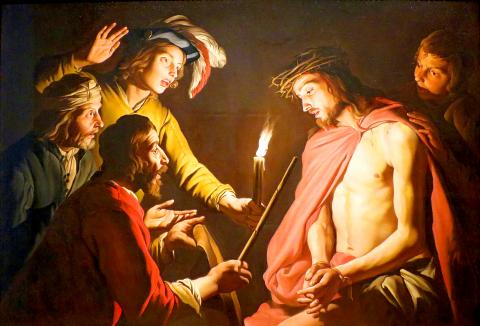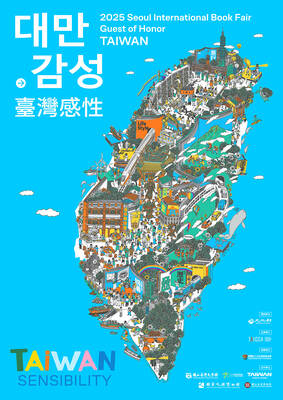In Christian music, a passion refers to the musical setting recounting the sufferings endured by Jesus Christ as recorded in the Bible. Traditionally, passions were mostly performed in Holy Week — also known as Passion Week — being the week leading up to Easter, or Resurrection Sunday, and are part of the liturgy. Renowned passions include Johann Sebastian Bach’s highly acclaimed work the St. Matthew Passion.
The origins of the passion can be traced all the way back to the fourth century, at a time when the Church would, as part of the liturgy during Holy Week, recite the passages of Christ’s sufferings as described in the four gospels of the New Testament. During the Middle Ages, the priest started to apply different intonations when reciting the biblical account, gradually building up into a form of interpretive chant. At that time, a range of 11 notes were divided into three parts: the lowest four notes were reserved for the words of Jesus Christ in the gospels, the middle notes were given to the Evangelists intoning the story, and the highest four notes represented the crowd, known as the turba. During the 13th to 15th centuries, the story of the passion went from being recited by a single priest to the addition of three to four other voices, all of whom would take on different roles, until it gradually morphed into an early theatrical performance. At this point, a hymn would sometimes be inserted between chants, performed by the church choir, in the polyphonic musical style that was popular at the time, to give us the earliest form of the passion.
When Martin Luther initiated the Reformation, he also promoted the theological doctrine of sola scriptura, which emphasized the importance of each individual reading the scriptures, and not relying solely on the interpretation of priests. For this purpose, he translated the entire New Testament from the original Greek into vernacular German, thereby circumventing the Latin version used by the Roman Catholic Church.

Photo: Wikimedia Commons
照片:維基共享資源
Following the Reformation, the passion performed during Holy Week developed along two lines. Composers belonging to the Roman Catholic Church, such as Italy’s Alessandro Scarlatti and France’s Marc-Antoine Charpentier and Francois Couperin, based their compositons on the Latin text of the Book of Lamentations from the Old Testament of the Bible and wrote Responsories for Holy Week and Lecons de tenebres (lessons of darkness) that would have accompanied the tenebrae services in the three days preceding Easter. German composers following Protestantism, on the other hand, used Luther’s German translation of the Bible, combining this with the expansive oratorio style, to create passions on a much larger scale.
(Translated by Paul Cooper)
在基督教音樂中,「受難曲」指的是根據聖經記錄的耶穌受難過程,譜成的音樂作品。傳統上,受難曲大多於「聖週」──或稱「受難週」,亦即復活節的前一週──演出,屬於禮拜儀式的一部分。著名的作品包括巴赫的扛鼎之作「馬太受難曲」。
受難曲的起源最早可追溯到四世紀時,教會於聖週期間的禮拜儀式中,朗誦聖經《新約》四福音書中關於耶穌的受難紀錄。中世紀時期,神職人員在朗誦時開始加入抑揚頓挫的聲調,逐漸發展出歌唱般的吟詠方式。在當時,一組十一個音符會被分成三個部分:最低的四個音符表現福音書中耶穌所述,中間的音域安排予福音史家(the Evangelist)朗誦聖經記載的情節,最高的四個音則留給包含其他角色的「群眾」(turba)。及至十三到十五世紀之間,受難故事朗誦由單一神職人員獨挑大樑,增加為三到四名,分別負責不同角色,遂出現戲劇的雛形。此時,朗誦的段落之間有時亦會加入讚美詩,由教堂中的合唱團演唱,並以當時盛行的複調音樂風格呈現,形成「受難曲」最早期的樣貌。
隨著馬丁路德推動宗教改革,提倡「唯獨聖經」的理念,強調每個人親自閱讀聖經的重要性,而非完全仰賴神職人員的解釋,遂將整本《新約聖經》由希臘文直譯成通俗的德文,跳過羅馬天主教廷使用的拉丁文版本。
在宗教改革後,於聖週演奏的受難曲逐漸演變成兩種派別。屬於羅馬天主教的作曲家,例如義大利的亞歷山大‧史卡拉第,以及法國的馬克-安東尼‧夏龐蒂埃和法蘭梭瓦‧庫普蘭,以《舊約聖經》的《耶利米哀歌》拉丁經文為本,分別寫下《聖週應答文》和配合熄燈禮拜儀式的《受難週黑夜日課經》。另一方面,信奉新教的德國作曲家,則使用馬丁路德翻譯的德文聖經,結合大規模的神劇風格,寫出篇幅較大的受難曲。
(台北時報章厚明撰)

The 2025 Seoul International Book Fair was held from June 18 to 22 at the COEX Convention & Exhibition Center in Seoul, South Korea. This year, participants from 17 countries attended, with over 530 publishing houses and related organizations taking part. For the first time, Taiwan participated in the book fair as the Guest of Honor, bringing together more than 85 publishers and presenting a curated selection of 550 titles. A delegation of 23 Taiwanese creatives traveled to Seoul to attend the event, including 13 literary authors, six illustrators, and four comic book artists, among which were a film director, an

In late 2024, the suicide of acclaimed Taiwanese author Chiung Yao at 86 sparked a societal debate. She expressed her desire to avoid the difficult aging process and sought to govern her own death rather than leave it to fate. Her statements propelled the issue of “euthanasia” back into the public arena, posing the question of whether Taiwan should legalize euthanasia to grant patients and the elderly the right to die with dignity. Euthanasia, the intentional ending of a life to relieve suffering, is legal for humans in countries like the Netherlands and Belgium but remains prohibited in Taiwan.

A: Wow, the 36th Golden Melody Awards ceremony is set for this weekend. B: I like all the nominees for Best Mandarin Album: Incomplete Rescue Manual by various artists, Outcomes by J.Sheon, Invisible Color by Terence Lam, The Dreamer by Khalil Fong, Haosheng Haochi by Trout Fresh and Ordeal by Pearls by Waa Wei. A: Despite struggling with serious illness, Fong managed to finish his last album before he died. B: With his hit Twenty Three, he is also nominated for Best Song, Lyricist and Composer, and will receive a Special Jury Award for his album. A: And

Continued from yesterday(延續自昨日) https://www.taipeitimes.com/News/lang As Gen Beta grows, they are expected to witness advanced technologies becoming fully integrated into various fields like education, workplaces, healthcare and entertainment. In addition to technological developments, they will also face big challenges like severe climate change. Influenced by their Gen Y or Gen Z parents, who view climate change as a critical issue for the future and prioritize sustainability, they are likely to focus more on global issues and seek innovative solutions to address them. Moreover, Gen Beta will experience considerable demographic changes, such as lower birth rates and longer lifespans. Consequently, Gen Beta is predicted to